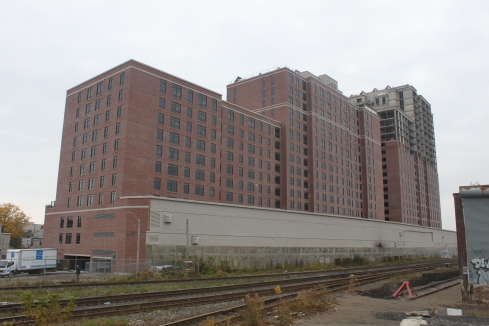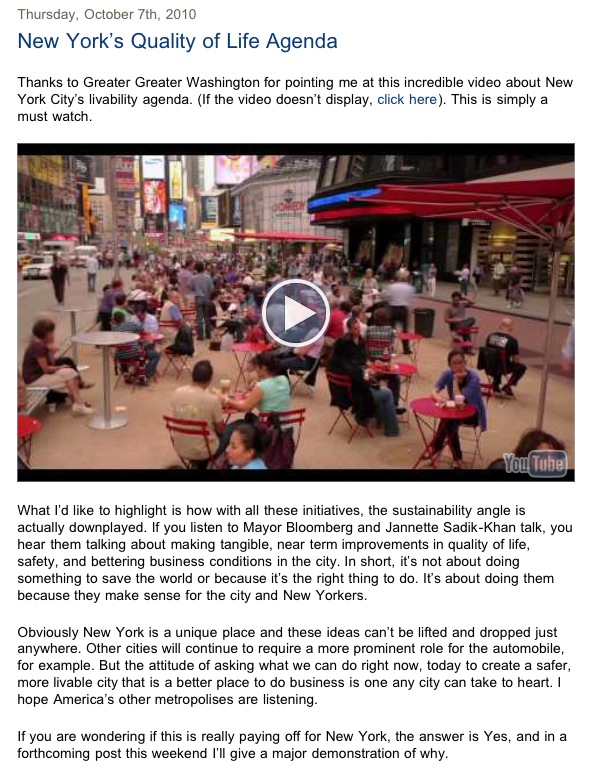. Municipal decisions shape our everyday lives, from the quality of our public services to the health of our environment, yet voting turnout hovers at around 40 per cent. Your involvement during the final few days of the election is critical to shaping the outcome.
Here are five strategic ways you can take action.
Make up your mind
You get to vote for four positions this October: Toronto school board trustee, Catholic school board trustee, mayor, and city councillor. The city's election website lists all candidates by ward. Check it out by clicking here.
Now you need to decide who to support. Candidate websites are a great place to start. Most candidates post their policy platform and resume -- both say a lot about the candidate's values and priorities.
Another quick way to assess a candidate is to ask them what political party they identify with -- municipal candidates do not publicly identify with a party, but they will often answer a direct question.
Third-party candidate rankings and endorsements are a reliable and trusted way to assess candidates. The Campaign for Public Education, the Toronto Environmental Alliance, the Toronto & York Region Labour Council, and the Public Transit Coalition have all issued endorsements or statements about the candidates. These groups conduct the careful background-research we don't have time to do, like reviewing voting records and interviewing candidates.
If you have time, try meeting the candidates in person. Visit their campaign office, or attend one of the many mayoral and candidates-debates taking place across the city. Ask questions on issues that matter most to you. To find a debate check out the candidates' websites, or go to the city's debate-finder map at toronto.ca.
Vote
About 38 per cent of the Torontonians vote, which is super low. Low turnout rates, however, mean that our efforts to vote and increase voter turnout can have a significant influence on election outcomes.
October 25 is next Monday, so if you do the 9-to-5 thing, vote at one of the six advance-voting-days in October (including Saturday 16th and Sunday 17th) at select polling stations. Polling stations on the advance days are open 10 a.m. to 6 p.m. Polls on October 25 are open 10 a.m. to 8 p.m. Details on poll locations can be found by clicking here.
Don't get turned away at the polls, U.S. Election 2000 style. Bring ID with your name, signature, and address. A health card or driver's license will work. If you can (it's optional), take your voter information card (it was in the mail early October). For more information on ID rules click here.
Educate and activate your network (It's bigger than you think)
At the first election training I attended I was asked to bring the names and numbers of 100 people I could ask to give money or volunteer for our campaign. I said I didn't know 100 people, but the election-trainer persisted and said I could include anybody that comes to mind, from my brother to my hairdresser. Turns out I did know that many people and so do you.
It's time to reach out to your contact list and ask them to vote, volunteer, educate others, and donate. Mass emails and social media tools like facebook posts are the quickest way to communicate to many, but personal phone calls and face-to-face discussions yield far more "yeses," and far bigger commitments. Instead of getting a "yes, I'll forward this email," you might get a "yes I'll join you and volunteer on a political campaign."
Talk it up everywhere, from the doorstep, to the bus stop to the dinner table. Nigel Barriffe, co-chair of the Good Jobs for All Coalition, shared a great experience breaking the rule of no talk of politics at the dinner-table when he wore a "Joe Pantalone" badge to a Shabbat dinner (his first) at his girlfriend's family's house last week.
"Before I went I thought, do I really want to wear this button?" Nigel said. "But the badge started great conversations about bicycles versus cars and privatization versus public ownership. I realized it was important they heard my voice, and regardless of who any of us vote for, it was clear that everyone at the table had a deep love for the city and a desire to build a better Toronto."
Volunteer
The most effective volunteer activity you can do from now until the election is volunteer for a candidate.
Call up the candidate's office or just walk in off the street. The campaign should have someone available to greet, orientate and support volunteers, like you.
Chances are you'll be assigned one of four activities: phoning residents, going door-to-door asking residents to vote and support your candidate; dropping off literature at houses, or installing signs on lawns.
At this late stage of the election, volunteers who want to take on big tasks like designing the website or reviewing the campaign's media strategy are generally frowned upon. This work is usually done by professionals and chances are it's already been done.
Despite the consistency in tasks, campaigns are generally very exciting, busy places full of committed, interesting people. Labour Council consultant and municipal campaign expert, Jill Marzetti, recommends volunteers work hard to learn about key election issues and the candidates' priorities so you can be persuasive when talking to residents.
When talking to voters it helps to ask questions in order to gauge what issues matter to them, and then tailor your response so it references their priorities, if possible. If they care about transit then talk about where the candidates stand on expanding the TTC, and so on.
Donate
Elected officials need money, and they tend to be more beholden to constituencies that give.
Individual donations have never been more valuable. Compared to other major cities, the maximum amount a candidate can legally spend on their campaign is fairly low, which means your dollar goes proportionately further. Mayoral candidates can raise up to $1.3 million; city and school board trustee candidates can raise up to $20,000 to $60,000 depending on the ward, and Catholic school board candidates can raise about $7,000. In addition, Toronto just banned contributions from unions and corporations to mayoral and city council candidates. So we're actually the only ones left to give.
To encourage giving, the city has set up a rebate program that returns up to 75% of your donation. The city's rebate system is similar to that typically found on electronics items; if you don't send in your paperwork to apply for your rebate by a certain date (in this case January 3, 2011) you don't get your money back. Don't forget. Calculate your rebate here.
Donation rules are different for school trustee candidates. School trustees can take donations from unions and corporations, and individual donors are not eligible for the rebate-program.
Jessica Bell is the communications and campaigns manager for the Toronto and York Region Labour Council.
- Posted using BlogPress from my iPhone
































